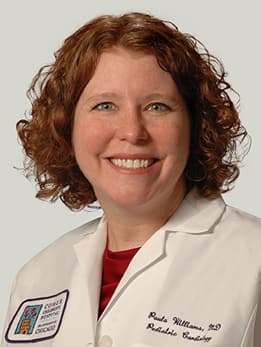Diagnosis & Treatment
At the University of Chicago Medicine Comer Children’s Hospital, our Pediatric Colorectal Reconstruction Center focuses on the diagnosis, treatment and long-term management of imperforate anus, cloaca and Hirschsprung's disease. We are committed to caring for patients through all stages of life — from birth through potty training, puberty, sexual function and childbearing — to provide optimal outcomes and quality of life.
We start the diagnostic process by performing a complete physical examination. Tools we may use to confirm or rule out a diagnosis include:
- Magnetic resonance imaging (MRI), which uses magnetic fields and computers to create images of the organs
- Computed tomography (CT) scan, a noninvasive imaging procedure that uses X-rays to produce images of the organs
- Abdominal ultrasound, which uses high-frequency sound waves to assess how well the blood vessels, tissue and organs are working
- Endoscopic evaluation of the bladder, rectum and gynecologic organs
- Voiding cystourethrogram (VCUG) to better define the anatomy and function of the bladder
Experts at our Pediatric Colorectal Reconstruction Center offer a wide range of surgical treatment options for patients with colorectal malformations. After evaluating your child, our team may recommend one of the following procedures:
- Diverting colostomy: This is the first step in the treatment of complex imperforate anus (a birth defect in which the rectum is malformed). The procedure involves diverting stool from the fistula (a connection that forms between the rectum and another area of skin, the urethra or bladder, or the vagina), until it's time for definitive reconstructive surgery. Stool is also diverted after surgery to allow the reconstructed perineum and anus to heal.
- Posterior sagitall anorectoplasty (PSARP): A more definitive repair, PSARP involves repositioning the rectum within the sphincter muscles to allow for normal emptying.
- Abdominal repair of imperforate anus (laparoscopic or traditional): Depending on the location of a patient's fistula, surgeons may recommend an abdominal approach to surgery rather than a PSARP (which requires an incision in the perineum) or a combination of the two approaches.
- Trans-anal pull-through (laparoscopic or traditional): This treatment for Hirschsprung's disease involves removing the portion of the colon without nerve cells. It may be performed entirely from the anus or combined with an abdominal approach (laparoscopic or open).
In addition to these initial surgical treatment options, our surgeons offer second opinions and perform additional or revisional surgeries as needed.
When appropriate, we use minimally invasive surgical techniques. Our goal is to provide comprehensive treatment for each child with as few procedures and as little scarring as possible. We work closely with patients and their families to ensure proper healing after surgery.
After reconstructive surgery, the next step is for patients to learn bowel management techniques. Our Pediatric Colorectal Reconstruction Center includes a dedicated bowel management program that addresses issues such as constipation and incontinence. The program is run by a pediatric surgery nurse practitioner with expertise in colorectal malformations, including advanced training in bowel management.
Due to the complexity of colorectal malformations, patients benefit from ongoing medical care and close collaboration between the child's medical team, family and caregivers. At Comer Children's, our goal is to provide parents and families the tools they need to support pediatric patients as they grow and develop so that children can live normal, productive lives.






